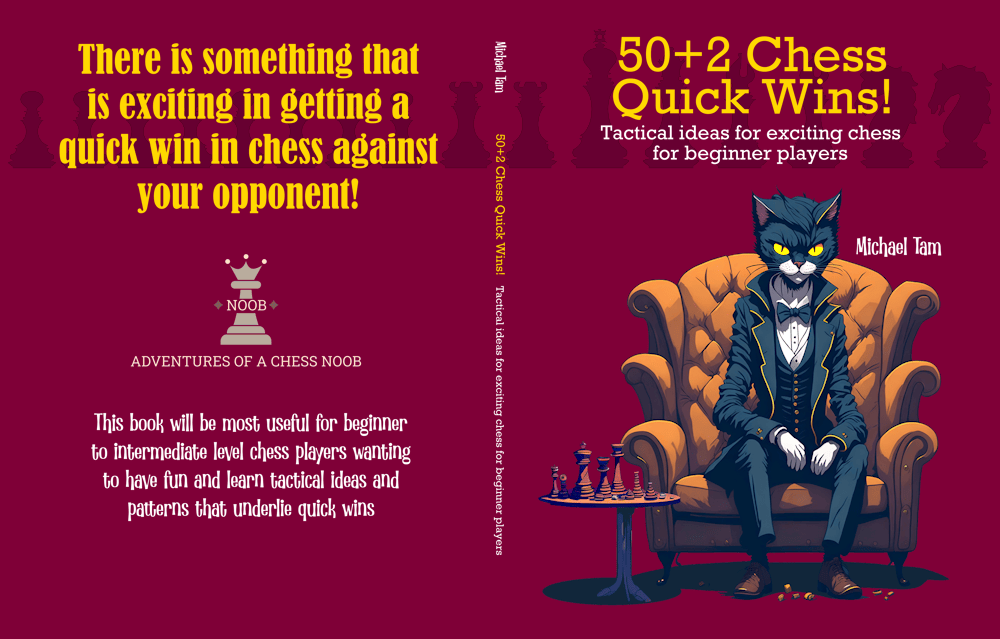
Qg4! The Anti-Zhuravlev Giraffe Counterattack in the Vienna Game! 🦒😊
#vienna #zhuravlev #anti-zhuravlev #giraffe
Last week, I had two consecutive games with different opponents (one on chess.com, and the next on Lichess) where I had the white pieces, and Black played down a specific line of the Zhuravlev Countergambit against my Vienna Game (1. e4 e5 2. Nc3 Bb4).

1. e4 e5 2. Nc3 Bb4
![]()
Those of you who follow my channel might remember that I discussed the history of this line in Quick Wins #87, including the earliest recorded game by the OG Vienna Game romantic masters (Hamppe — Falkbeer, 1855, Vienna)and the game by namesake Soviet/Latvian IM Valerys Zhuravlev in (Klavins — Zhuravlev, 1969, Riga, Latvia). Check out those games!
Now against the Zhuravlev Countergambit on move 3, White has many good moves.

![]()
The Lichess community database gives statistics on the top 12 most frequently made moves from the position, which had been reached in almost 3 million games. As can be seen, almost all of them give a win ratio advantage to White, but there is one that appears to be categorically better. The 11th most played move, occurring only 1.1% of the time against the Zhuravlev, is one of my favourite moves in chess: 3. Qg4! Although it isn’t the most accurate according to the engine, it’s certainly not a mistake, and White wins 59% to Black 37%!

![]()
Given the visual similarity to the Giraffe Attack, I call this the Anti-Zhuravlev Giraffe Counterattack. The fascinating thing about this Giraffe-ish attack is its propensity to induce a blunder from Black, even at the intermediate level! The obvious threat from the giraffe queen is the attack on Black’s g7 pawn. In both of my consecutive games, Black responded to this threat with the sensible looking (3… Qf6), developing the queen and defending the g-pawn. This response by Black is the second most played move (26%), which is only slightly less frequent (29%) than Black committing to an exchange (3… Bxc3). However, the move is a blunder, and White wins from the position 80% to Black 18%! Yes, in the position White has over four times the odds of winning compared to Black, and it’s only at the end of turn 3! Wow! 🤩
The reason is that White now has (4. Nd5!), a triple fork of Black’s bishop, queen, and c7-pawn (which comes with an absolute fork of Black’s king and rook). According to the engine, White is better than [+5] in the position. Fundamentally, Black cannot defend both their g-pawn (from White’s queen) and their c-pawn (from White’s knight) with a single move of their queen.

![]()
In my game of 10+5 on Lichess, Black thinks for a while, desperados their bishop (4… Bxd2 5. Bxd2), and then immediately resigns having suffered emotional damage.
Game 1: https://www.chess.com/analysis/library/X5cfeo43Q
![]()
In my 15+10 game on chess.com, Black finds the best move in the terrible position, which was to exchange queens (4… Qg6 5. Qxg6 fxg6). At this point, I had a clean capture of Black’s bishop (6. Nxb4), which is better than Nxc7+ and then Nxa8. Why is the bishop better than pawn and rook?
Well, Black’s b4-bishop was Black’s only active piece, and this was a clean capture that kept my knight active on the board. Capturing, the c7-pawn and then a8-rook yields more material initially, but Black’s rook hasn’t been activated and the knight ends up trapped on the a8 square. Depending on the context, but especially in the early part of the game, activity can often be more important than material!
My general strategic approach for the rest of the game was relatively simple: consolidate, ensure king safety, and trade pieces to enter an endgame with an additional piece. Black played quite well into the early middlegame but finally on turn 17, I was able to force the first trade (of knights). Turn 20, I forced a trade of bishops. With every trade, my numerical piece superiority is increasingly felt! Turn 25, a pair of rooks leave the game!
We each continued to have 6 or 7 pawns each on the board, which made knights especially effective. Knights can leap over lines of pawns, where rooks and bishops can be obstructed. Turn 31, I happily trade a bishop for Black’s knight, and I now have rook and knight vs Black’s rook.
On move 35, I miscalculate and make a blunder. Thinking that I had two attackers on Black’s f6-pawn where Black had only a single defender (their a6-rook), I captured the pawn with (35. Nxf6+). This blunders a winning advantage of over [+6] back to equality [0.00]. Can you see why this move is a blunder? What is Black’s single move that equalises the position?

![]()
My assumption was that Black could not capture my knight with (35… Rxf6), but this wasn’t correct! The problem was my back rank and Black’s b3-pawn. If I recaptured with (36. Rxf6), the rook leaving the back rank, Black could then follow up with (36… bxa2). The single step of tempo means that Black’s pawn cannot be stopped from promoting to queen. To prevent this, my rook cannot recapture and must stay on the back rank, which mean that Black would cleanly win the knight on f6. Although Black would have to play carefully from the position (rook and pawn endgames are tricky!) the position is nominally equal!
Luckily for me, Black didn’t see this tactic! 😅 I continue to manoeuvre my knight and finally (48. Rxb3) – the capture of Black’s b-pawn transformed my a- and b-pawns into connected passed pawns! It was no longer possible for Black to prevent pawn promotion (without trading away their final piece). They play on for a while, but this was an easy endgame to win. Black resigned on turn 61 as they had no tactical resources left and it was clear that their king was simply waiting to die. Good game, GG!
The big takeaway from this game is that if you are a Vienna Game aficionado, try the (3. Qg4) anti-Zhuravlev Giraffe Counterattack! I think you’d like it! 🤩



